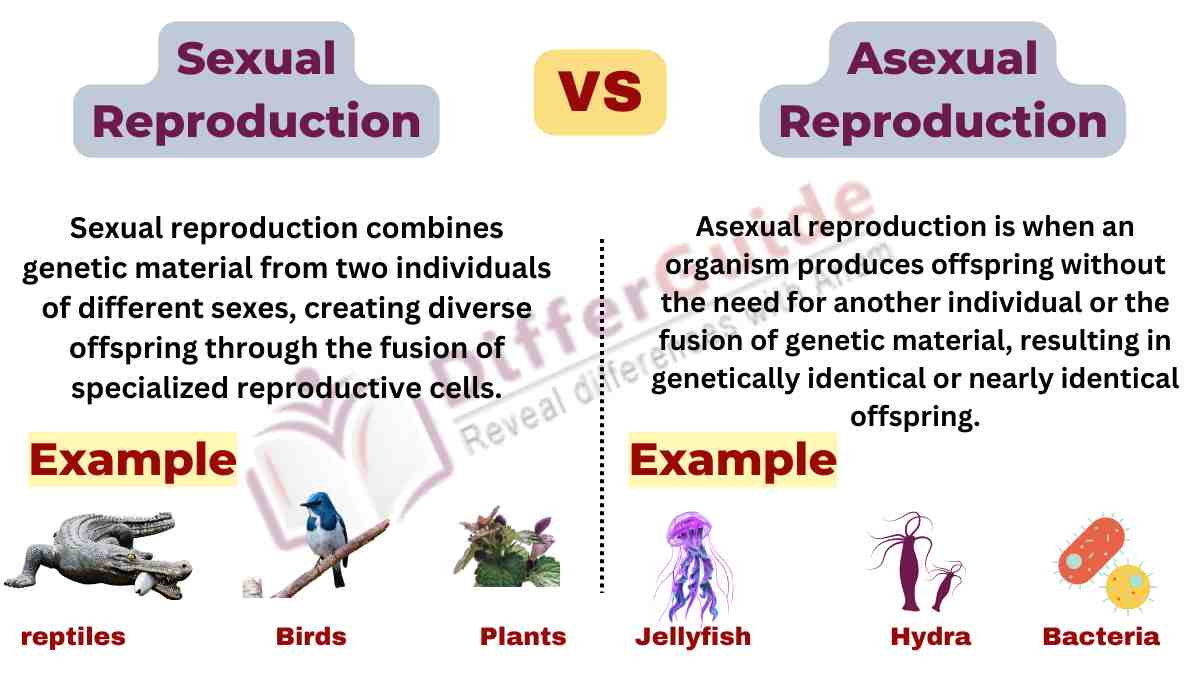The key difference between sexual and asexual reproduction is that sexual reproduction involves the fusion of gametes from two parents, leading to genetic variation in the offspring, whereas asexual reproduction does not involve gametes and produces genetically identical offspring.

In this article, we will discuss the difference between sexual reproduction and asexual reproduction.
What is sexual reproduction?
Sexual reproduction is a biological process in which two individuals of different sexes come together to produce offspring, involving the fusion of gametes and genetic recombination. It promotes genetic diversity and variation within a population.
What is Asexual reproduction?
Asexual reproduction is a form of reproduction where offspring are produced without the involvement of gametes or the fusion of genetic material from two parents, resulting in genetically identical offspring.
Sexual reproduction vs Asexual reproduction
The key difference between sexual reproduction and asexual reproduction is given below:
| Sexual Reproduction | Asexual Reproduction | |
| Definition | A process where offspring are produced without the involvement of gametes or the fusion of genetic material from two parents. | Process where offspring are produced without the involvement of gametes or the fusion of genetic material from two parents. |
| Genetic Variation | Offspring inherit a unique combination of genetic material from both parents, leading to genetic diversity. | Offspring are genetically identical or very similar to the parent organism, resulting in little to no genetic variation. |
| Number of Parents | Requires two parent organisms (male and female) to contribute genetic material. | Involves a single parent organism; no contribution from another organism. |
| Offspring Traits | Offspring display a combination of traits from both parents, resulting in individual variation. | Offspring are genetically identical to the parent organism, possessing the same traits and characteristics. |
| Examples | Humans, animals, plants (flowering plants) | Bacteria, fungi (yeast), some plants (strawberry runners) |
| Increases genetic diversity, and promotes adaptation, and evolution. | Requires less energy and time, and allows rapid reproduction, and colonization in stable environments. | Requires time and energy to find mates, risks of mating failure, or sexually transmitted diseases. |
| Disadvantages | Requires time and energy to find mates, risks of mating failure or sexually transmitted diseases. | Lack of genetic diversity limits adaptation to changing environments, susceptible to diseases or environmental changes affecting the entire population. |
